Whether you’re repainting your woodwork or upcycling a piece of furniture, you’re probably going to use one of two paint finishes – gloss or satin, but deciding which one is right for your project can be a dilemma. Read on to find out which one you should choose, as well as our pick of the best paint brushes for satin and gloss finishes:
Jump to:
- What's the difference between satin and gloss finish paint?
- Satin finish paint: benefits, drawbacks and where to use it
- Gloss finish paint: benefits, drawbacks and where to use it
- The best paint brushes to use with satin and gloss paint
Satin vs gloss finish: what’s the difference?
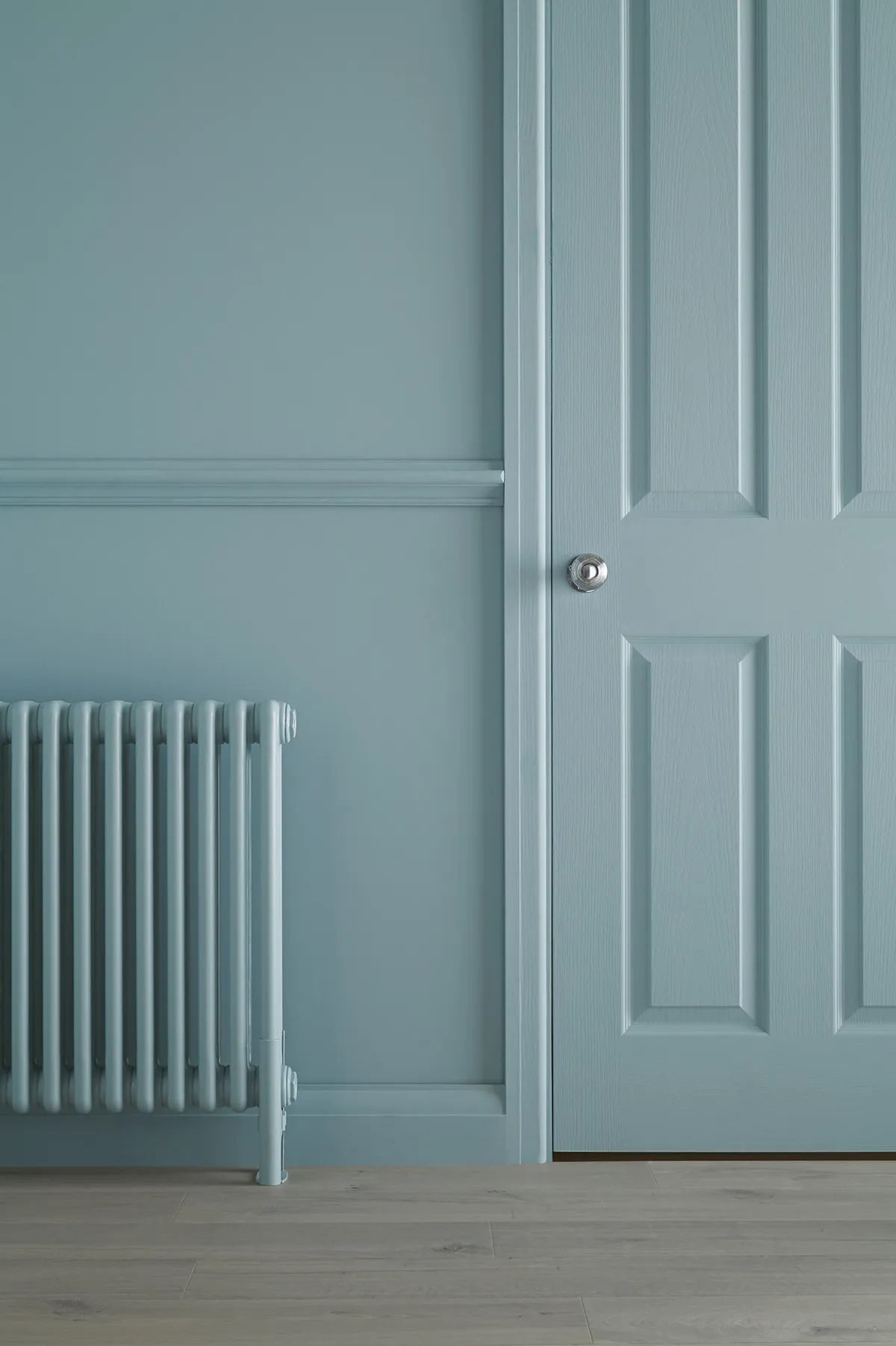
The main difference between satin and gloss finishes is the sheen. Gloss is more reflective, while satin has a more matt appearance that still has a hint of lustre. However, there are other differences to consider, including durability and the ability to hide imperfections on a surface. Both satin and gloss finishes are popular, and each is best in certain situations.
Gazing at the rows of paint cans in your local DIY store you’ll also discover other finish options, such as the very matt eggshell finish, which may only make choosing that much more challenging. But, by understanding the pros and cons of each finish, and which job each is best suited for, you can make sure you buy the right finish for your project.
What is a satin finish?
A satin finish offers just the slightest hint of sheen. It isn’t completely matt, as it does reflect light a little bit, but isn’t a particularly reflective surface either. In many cases, any light bouncing off the finish is barely noticeable, if you notice it at all. The presence of binders usually determines a paint’s sheen and with less-reflective products, the amount of binder to pigment is lower.
The benefits of a satin finish
With a satin finish, you typically get a smooth-feeling surface. It doesn’t tend to have a sticky quality, so you can easily glide your hand across it. Satin paints are generally durable and stand up to daily wear and tear better than most matter finishes. Plus, you can usually clean the surface, using a mild detergent solution, without causing damage.
One of the other benefits of a satin finish is its ability to hide imperfections. Since it doesn’t reflect light as strongly as a gloss paint, small scratches and dents are less noticeable. Bear in mind it won’t completely cover up mild damage, but it does it better than glossier options.
Finally, satin paint finishes may offer a more accurate colour than glossier finishes. They don’t reflect as much light, which reduces the likelihood that the colour of your lighting will alter the look of the paint significantly.
The drawbacks of a satin finish
A satin finish won’t completely hide imperfections, particularly deep dents. It can also be tricky to touch-up. If you add more paint to just a spot or two, those spots usually stand out visually instead of seamlessly blending. Bear in mind that while satin paints are durable, they aren’t as stain- or moisture-resistant as alternative options. This doesn’t mean they offer no protection, but it just isn’t as durable as what you get with some others.
You can also have issues if you apply coats of satin paint unevenly. The difference can stand out, so it may not be the ideal finish if you’re an inexperienced or messy painter.
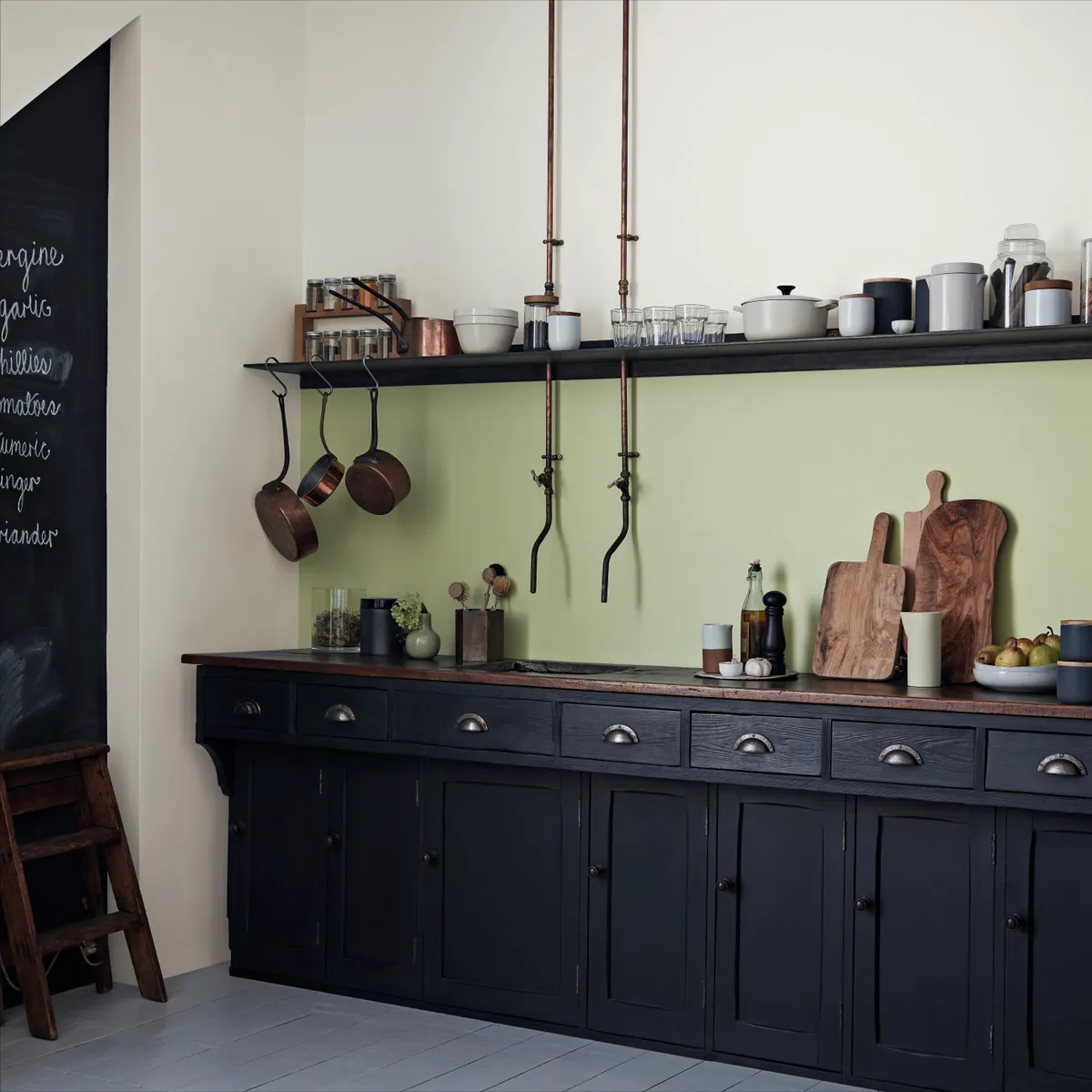
- Buy Key Lime Pie kitchen emulsion from Crown
- Buy Milk Bottle kitchen emulsion from Crown
- Buy Jet Black non-drip satin from Crown
The best places to use satin paint
Satin paint is great for high traffic areas, high-touch surfaces and furniture projects. It’s a popular choice for woodwork in living rooms and bedrooms, as reflective paint may be too dominant in those areas. Satin paint is also ideal for kids’ rooms, as it’s durable and can stand up to regular cleaning.
Hallways and kitchens are suitable spaces for satin paint, too. These rooms are naturally high-traffic and there’s a greater chance of the surfaces becoming dirty, and therefore needing cleaning more regularly, or being touched frequently, making a durable finish the best choice. Satin is also ideal if you’re upcycling furniture allowing the colour to take centre stage, rather than a distracting high shine surface.
What is a gloss finish?
A gloss finish is the shiniest option available. It gives surfaces a slick appearance, reflecting a significant amount of light.
The benefits of a gloss finish
With a gloss finish, you typically get a highly durable, easy-to-clean surface. Often, it is even resistant to staining, as well as being moisture-resistant. Gloss finishes also help to brighten up spaces thanks to their light-reflective properties. This allows them to make darker rooms or corners noticeably brighter in the presence of nearly any light source.
The drawbacks of a gloss finish
The greatest challenge with gloss paint is how much it highlights imperfections. Even small problems will appear glaringly obvious after gloss paint is applied. As a result, you need to make sure you thoroughly prepare the surface before painting, ensuring it is completely smooth before applying the paint.
High gloss finishes can also be too distracting when used in large areas which are very well lit, drawing your eye to the glossy woodwork rather than the walls or furniture. You might also notice that gloss paint colours appear to alter depending on the lighting. Since the surface is reflective, it can be altered by the hue of the light, causing the colour to appear warmer or cooler based on the type of light bulbs you use or how much daylight is coming in.
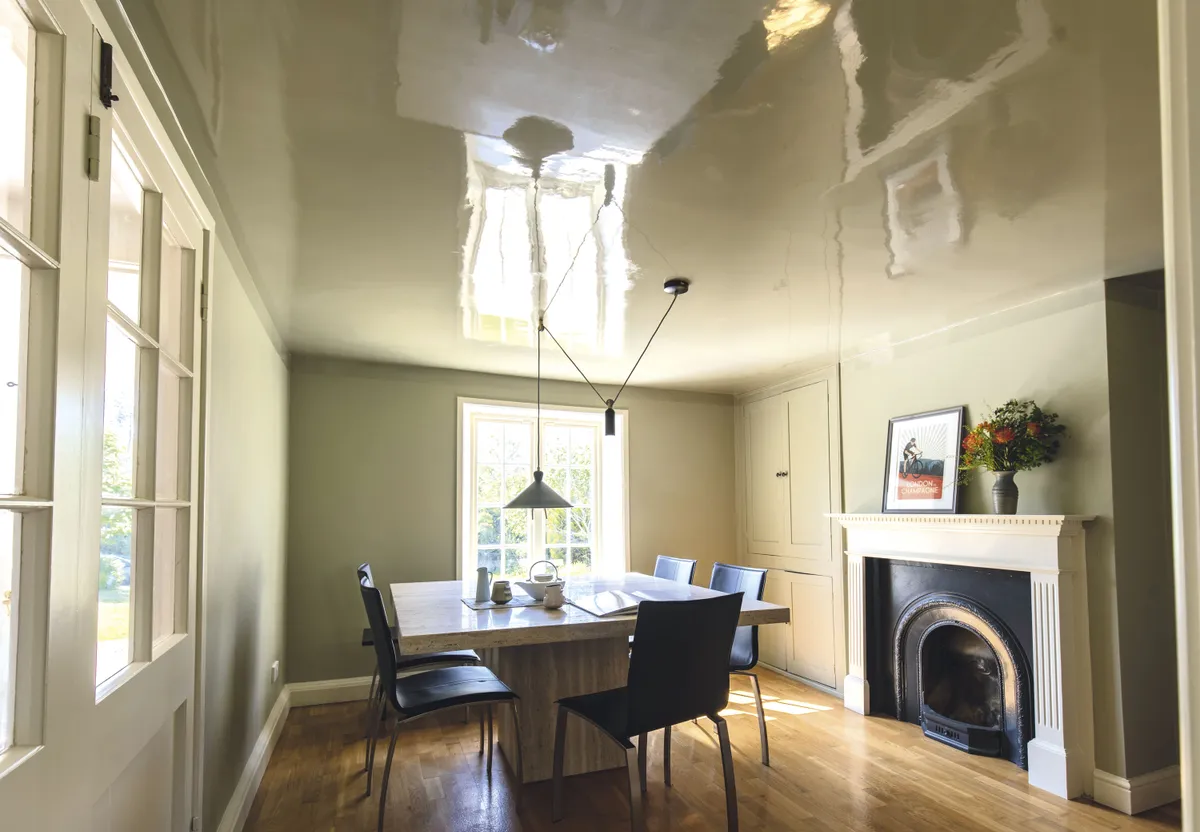
The best places to use gloss paint
As gloss paint is highly reflective, it’s wise to use it strategically. It’s ideal for front doors, woodwork or mouldings and can also work for smaller items of furniture, such as stools or side tables. You can also have fun by using a high gloss paint to create subtle patterns. Try pairing it with a satin paint in the same colour, using the high gloss to create shiny strips or designs over a less reflective satin base coat.
Should I choose satin or gloss?
As we’ve discussed, the main difference between satin and gloss paint is the sheen, with one option being significantly shinier than the other. When you’re looking at satin vs. gloss paint, you’re at two ends of the sheen spectrum. Next to each other, satin paint looks practically matte and offers a velvety look, with just the slightest hint of shine compared to the high-shine finish of a gloss. Gloss paint can, at times, provide a near lacquer-like finish. It’s highly reflective, so light bounces off more dramatically.
While gloss generally offers higher levels of durability, satin still stands up admirably to wear and tear. As a result, beyond sheen, they are highly comparable. However, satin is often less intense to look at on woodwork and furniture and provides a more authentic colour experience since it isn’t as altered by reflected light. Gloss can be excellent for front doors, mouldings and accent pieces, bouncing light and drawing attention to unique room features or furniture pieces.
Each finish has unique strengths and weaknesses and creates an entirely different look. Consider the virtues and drawbacks of each finish and go with the finish that best matches your needs and preferences.
The best paint brushes to use with gloss and satin finish paints
When choosing which brush to use with satin and gloss paints, there are several points to consider. One is whether the paint is oil or water-based. Natural bristles are often preferred for applying oil-based paints because they are less prone to clogging, while synthetic bristles are more suited for water-based paints due as the fibres are less porous and thus won't absorb water.
Looking to expand your painting kit? Check out our pick of the best painting tools as well as our tried and tested reviews to find the best paint brush sets. However, if you need if you're in a rush or just want to buy a single paint brush, read on:
Harris Seriously Good Woodwork Gloss No-Loss Paint Brushes, 3 Brush Pack
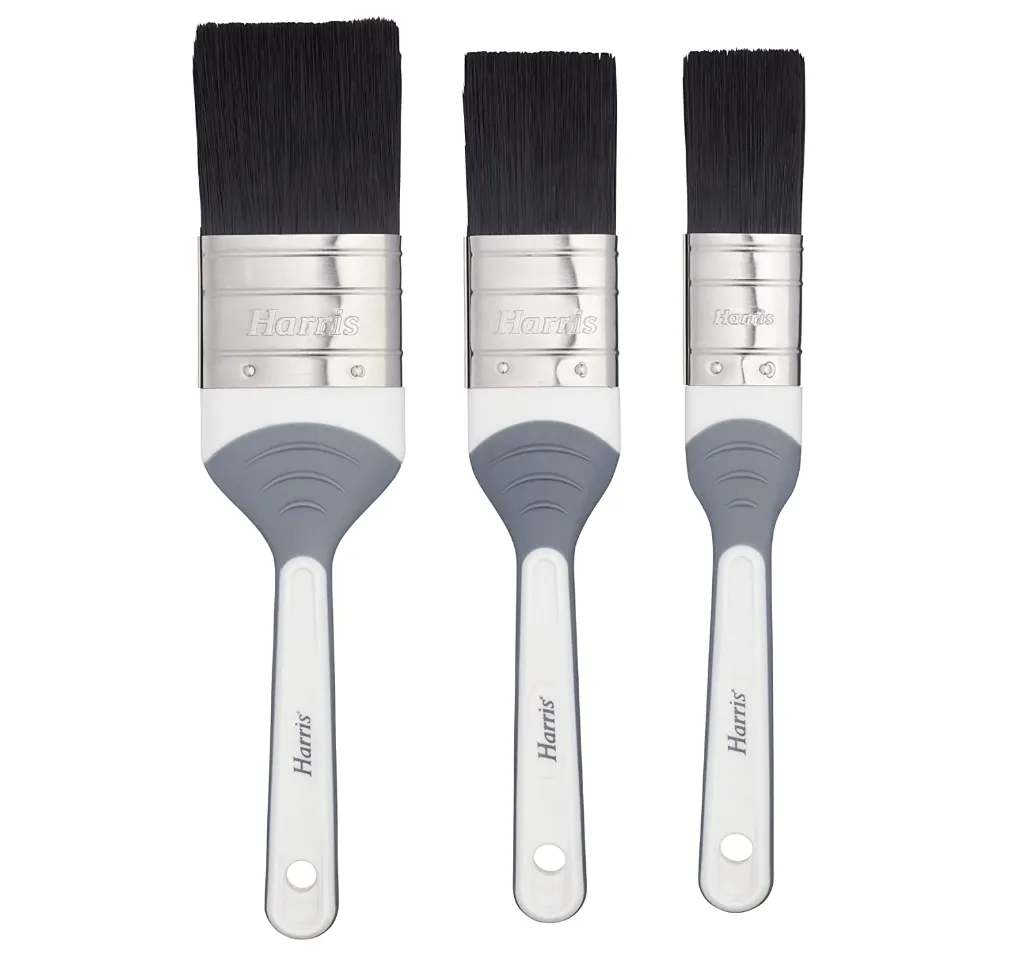
Awarded Best for woodwork on our tried-and-tested review to find the best paint brush sets.
Harris are a leading name in quality brushes for all kinds of painting jobs around the home, and their Seriously Good range offers affordable painting tools which don't skimp on performance. This three-piece Woodwork Gloss set includes 1", 1.5" and 2" synthetic bristle brushes, so you'll have the right brush size for all kinds of tasks. Designed for use on flat wooden trims, these brushes are adept at handling not just gloss paints, but also satin and eggshell finishes, and benefit from Harris' No-Loss technology to avoid bristle shed.
SQUIRREL_13110747
Harris Ultimate Woodworks Gloss No Loss Paint Brush
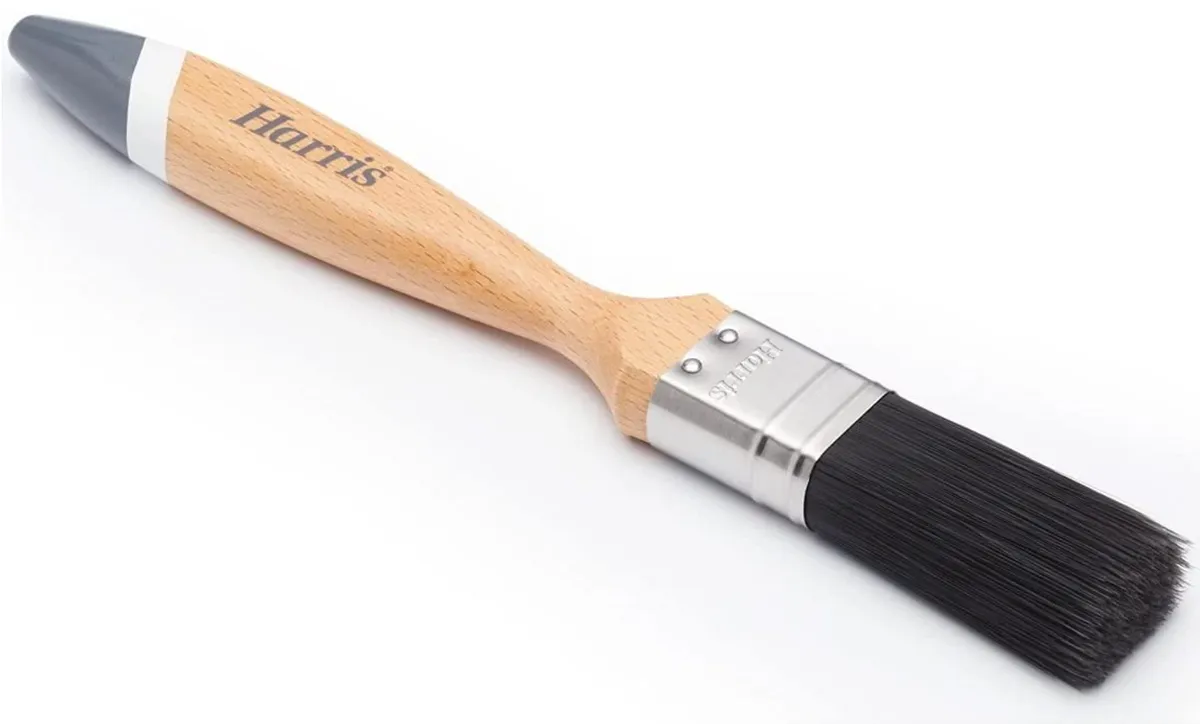
If you're looking for high-quality brushes built to last the test of time, consider upgrading to Harris' premium Ultimate range. Using synthetic bristles with No-Loss technology to prevent shedding, they're sure to become a staple of your painting kit. This 2" brush is specifically designed for use with gloss and satin paints on woodwork trim around your home.
Hamilton Perfection 2 Inch Pure Bristle Paint Brush
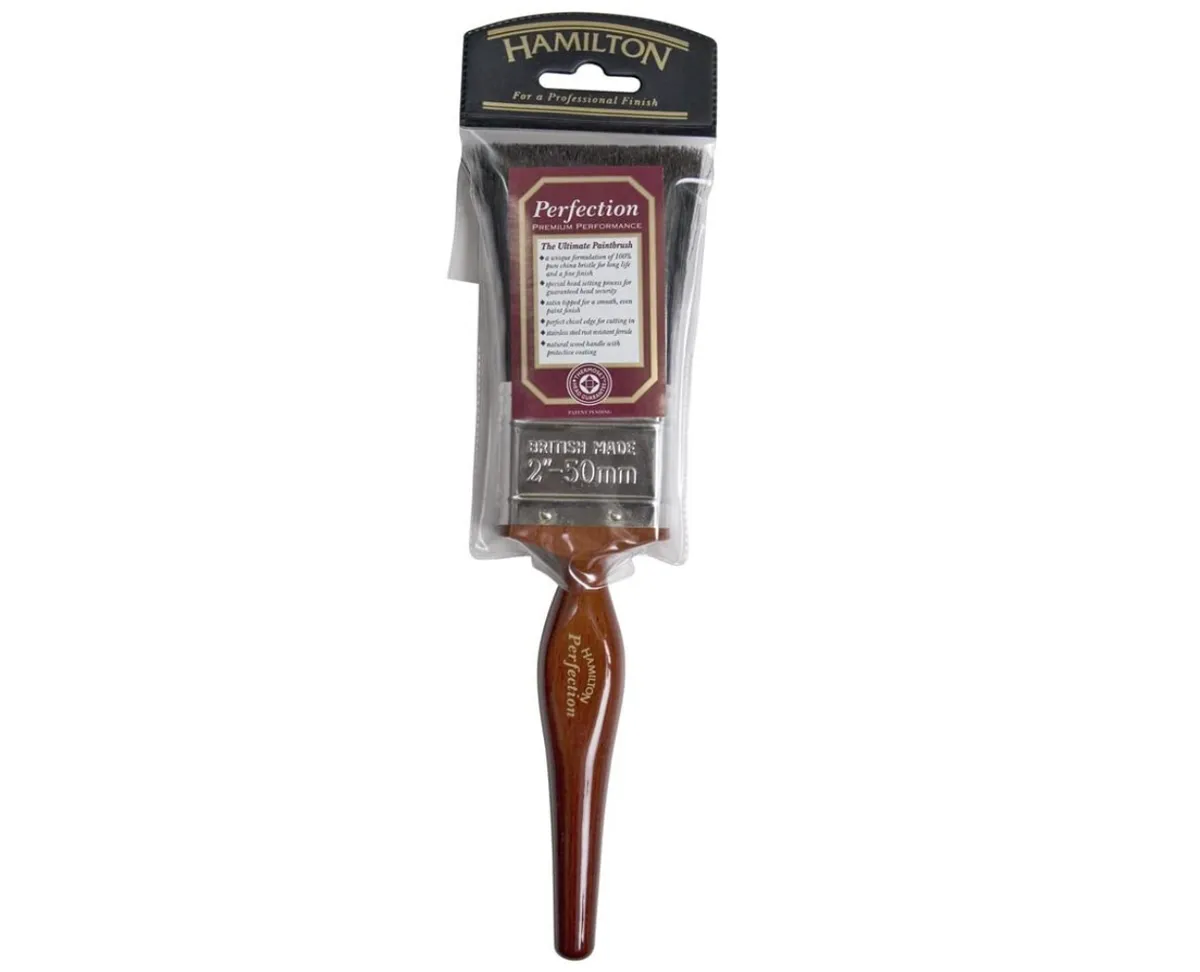
As mentioned earlier, natural bristles are a good bet for oil-based glosses, and Hamilton's Perfection brushes are a favourite among professional decorators. Using 100% natural bristles that won't get stiff or clogged even in contact with oil-heavy paints, this is a brush that is built to stand the test of time. Plus, the natural bristles can be washed clean in a simple soap and water solution, without resorting to harsh chemicals.
SQUIRREL_13110748
ProDec 2 inch Woodworker Short Handle Paint Brush
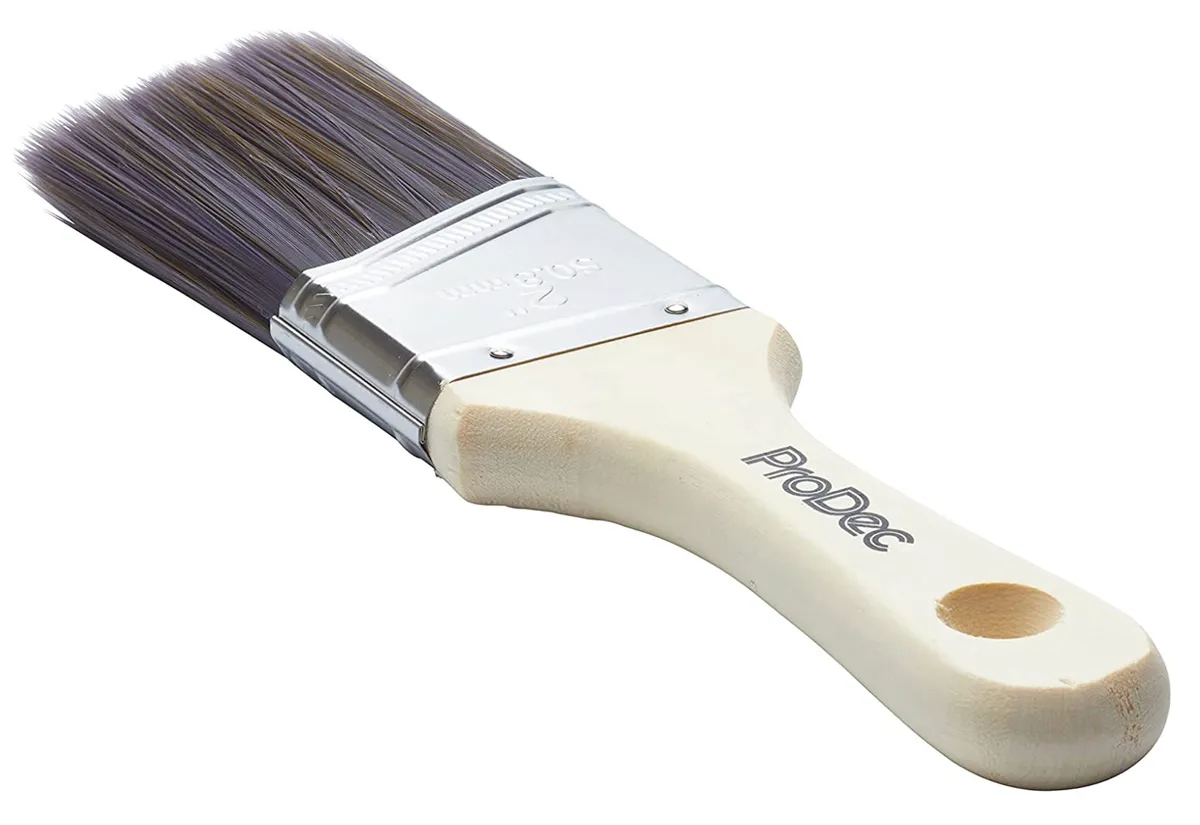
This 2" brush from ProDec is made from synthetic SRT filament bristles suitable for use with both water-based and oil-based paints, making it a versatile addition to your paint cupboard. Plus, the angled head makes cutting in and navigating tricky areas much easier, even for amateur decorators. We love that you can use it not just with wood, but also walls, ceilings and metal surfaces - a true all-rounder.
Hamilton for The Trade 7 Piece Foam Roller Set
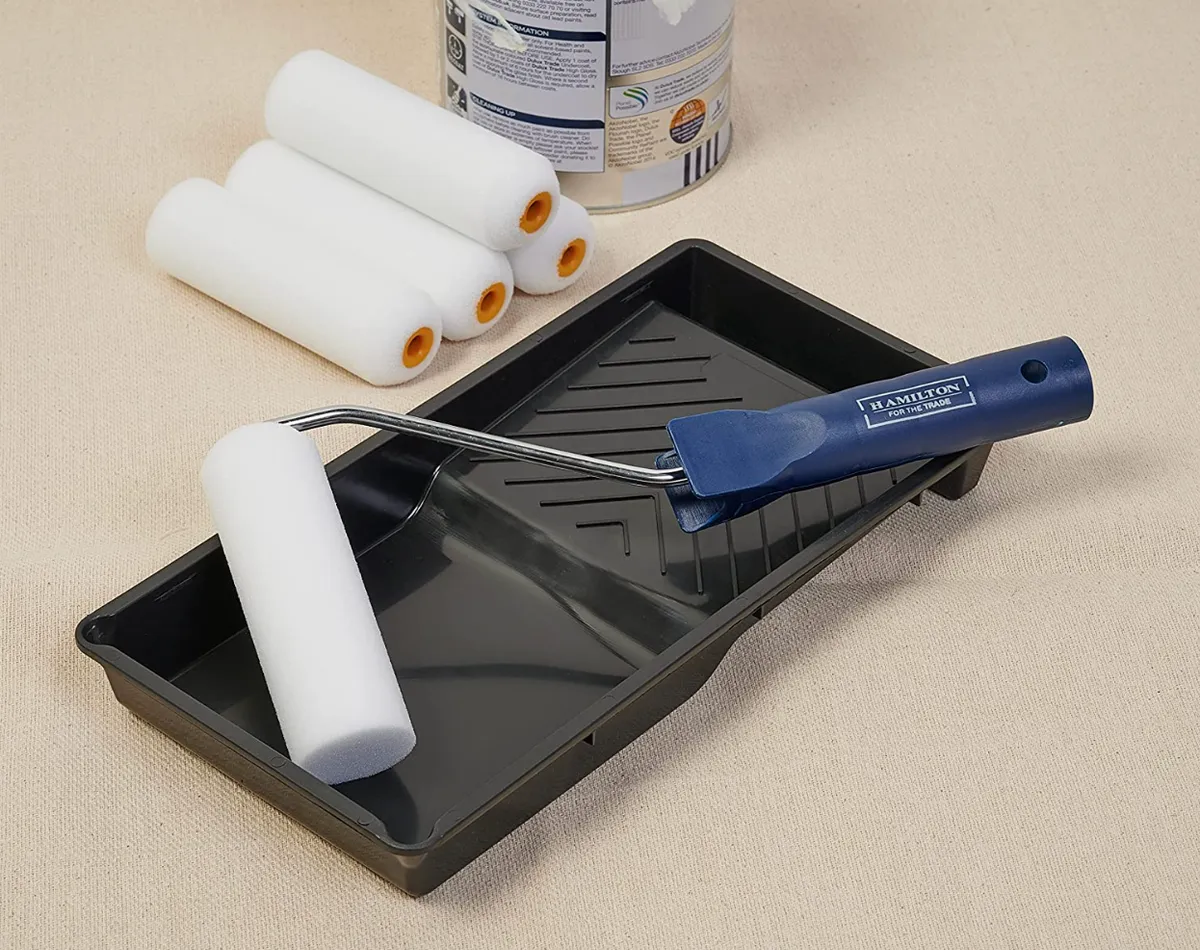
While a few decent paint brushes in a variety of sizes are essential for any decorating job, you can save time by using a roller for flat areas, saving the brushwork for delicate jobs like edges and corners.
Foam paint rollers aren't recommended for working with solvent-based paints, but they're just the job when it comes to applying water-based gloss or satin paint. Hamilton are a favourite brand for professional painter-decorators, and their 4" foam roller set is the perfect size for tackling small areas of flat woodwork such as skirting boards, bannisters, doors and window sills. The set includes five 4” rollers made of high density foam to ensure a smooth finish, as well as the roller frame and tray.
For more practical advice and buyer's guides, check out how to clean your paint brushes, the best non-toxic and planet-friendly paints on the market, how to cut in when painting, seven of the best paints for exterior wood, and where to buy paint online. We've also been busy with our tried-and-tested review of the best wood primers.


